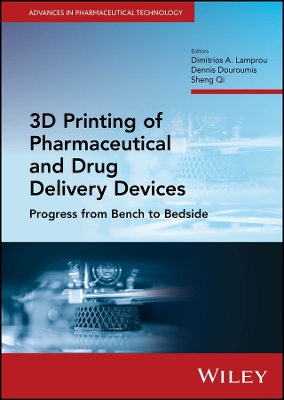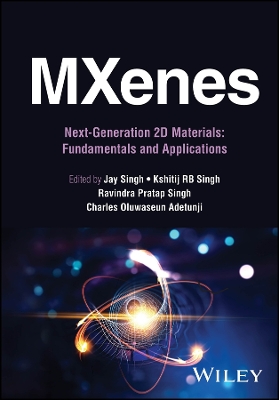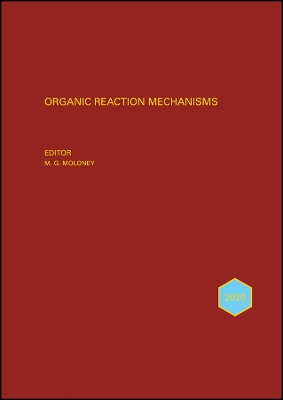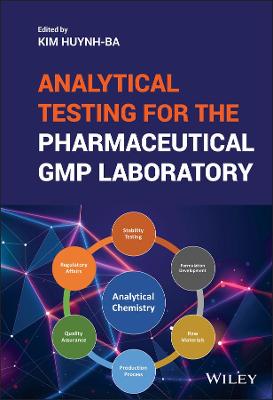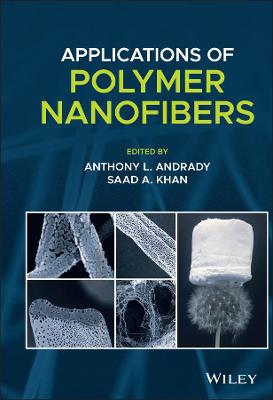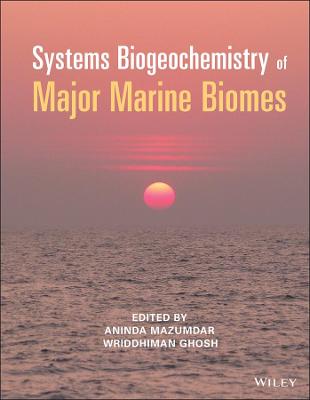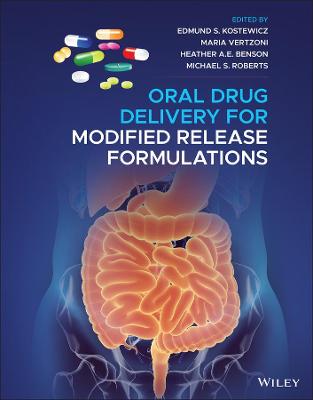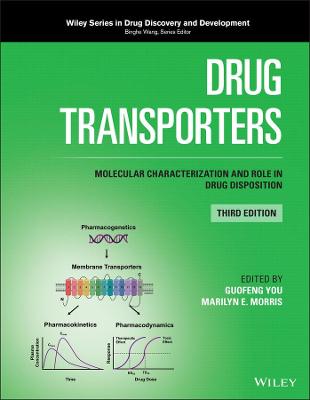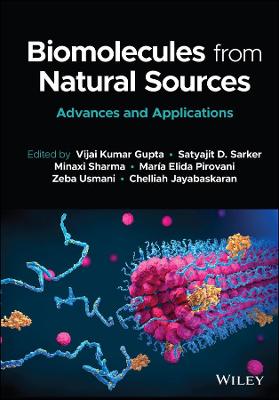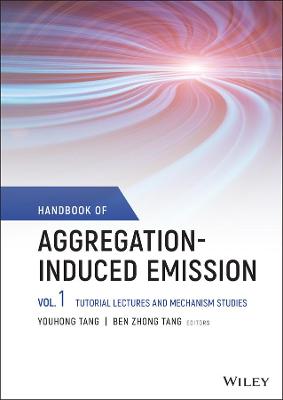Microplastics in Urban Water Management
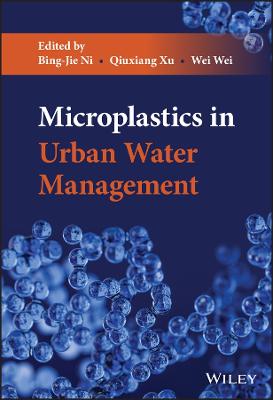 -15%
portes grátis
-15%
portes grátis
Microplastics in Urban Water Management
Wei, Wei; Xu, Qiuxiang; Ni, Bing-Jie
John Wiley & Sons Inc
12/2022
496
Dura
Inglês
9781119759348
15 a 20 dias
763
Preface xvii
1 Techniques for Microplastics Detection in Urban Water Systems 1
Xiaowei Li, Man Li, Lulu Liu, and Xiang Huang
1.1 Introduction 1
1.2 Sample Collection and Separation 1
1.2.1 Freshwater Samples 1
1.2.2 Freshwater Sediments 5
1.2.3 Wastewater Samples 9
1.2.4 Sludge Samples 12
1.2.5 Drinking Water Samples 14
1.3 Sample Purification 16
1.3.1 Wet Peroxidation 16
1.3.2 Enzymatic Degradation 17
1.3.3 Alkaline and Acid Treatment 18
1.3.4 Influence of Chemical Purification on Microplastic Property 20
1.4 Sample Identification 25
1.4.1 Visual Identification 25
1.4.2 Microscopic Identification 26
1.4.3 Spectroscopic Identification 27
1.4.4 Thermal Analysis 29
1.5 Quantitative Analysis 32
1.5.1 LD Method 33
1.5.2 DLS Method 34
1.5.3 NTA Method 34
1.5.4 Challenges in Particle Size Analysis 35
1.6 Quality Control 36
1.6.1 Internal Deviation 36
1.6.2 Judgment Error 37
1.7 Summary and Future Outlooks 37
References 37
2 Occurrence and Removal of Microplastics in Drinking Water Systems 53
Junyeol Kim, Yongli Z. Wager, Carol Miller, and John Norton
2.1 Introduction 53
2.2 What Are Microplastics? 55
2.2.1 Primary and Secondary Microplastics 56
2.3 The Emergence of Microplastic 57
2.3.1 Sources 57
2.3.2 Transformation 59
2.4 Occurrence of Microplastics in Drinking Water Systems 61
2.4.1 Abundance 61
2.4.2 Distribution 64
2.4.2.1 Size Distribution 65
2.4.2.2 Morphological Distribution 66
2.4.3 Composition 67
2.5 Removal of Microplastics in Drinking Water Systems 68
2.5.1 Water Treatment Plant 69
2.5.1.1 Removal of Microplastics by the Overall Process of Water Treatment 69
2.5.1.2 Removal Rate of Microplastics Depending on the Size 70
2.5.1.3 Removal Rate Depending on the Type of Microplastics 73
2.5.1.4 Removal Efficiency Depending on the Composition of Microplastics 74
2.5.1.5 Removal of Microplastics by Coagulation, Flocculation, and Sedimentation 75
2.5.1.6 Removal of Microplastics by Filtration 76
2.5.1.7 Removal of Microplastics by Ozonation 77
2.5.2 Microplastic Removal in Lab-scale Studies 78
2.6 Summary and Prospects 80
References 82
3 Occurrence of Microplastics in Wastewater Treatment Plants 91
Kang Song and Lu li
3.1 Introduction 91
3.2 The Abundance and Removal Performance of Microplastics in WWTPs 92
3.3 The Microplastics Composition in WWTPs 102
3.3.1 Microplastics Size Distribution 102
3.3.2 Microplastic Shapes 103
3.3.3 Microplastic Materials 104
3.3.4 Microplastic Color 105
3.4 Removal of Microplastics in WWTPs and Contribution of Each Process 106
3.4.1 Primary Treatment 106
3.4.2 Secondary Treatment 108
3.4.3 Tertiary Treatment 108
3.5 Summary and Future Outlooks 109
References 110
4 Effects of Microplastics on Wastewater Treatment Processes 119
Yan Laam Cheng, Tsz Ching Tse, Ziying Li, Yuguang Wang, and Yiu Fai Tsang
4.1 Biological Treatment Processes 119
4.1.1 Conventional Unit Operations and Processes 119
4.1.1.1 Suspended-Growth Processes 120
4.1.1.2 Attached-Growth Processes 122
4.1.1.3 Advanced Wastewater Treatment Processes 122
4.2 Interactions Between Sludge and Microplastics 123
4.2.1 Activated Sludge 126
4.2.2 Aerobic Granular Sludge 126
4.2.3 Anaerobic Granular Sludge 127
4.3 Effects of Microplastics on Microorganisms and Key Enzymes 128
4.3.1 Heterotrophic Bacteria 128
4.3.2 Ammonia-Oxidizing Bacteria 129
4.3.3 Nitrite-Oxidizing Bacteria 132
4.3.4 Key Enzymes 132
4.4 Effects on Sludge Stabilization and Dewatering 134
4.4.1 Aerobic Digestion 134
4.4.2 Dewatering 136
4.5 Perspectives 137
4.6 Conclusion 139
Acknowledgments 140
References 140
5 Microplastics in Sewage Sludge of Wastewater Treatment 147
Wei Wei, Xingdong Shi, Yu-Ting Zhang, Chen Wang, Yun Wang, and Bing-Jie Ni
5.1 Introduction 147
5.2 Occurrence 149
5.2.1 Primary Sludge 150
5.2.2 Waste-Activated Sludge 152
5.2.3 Dewatered Sludge 153
5.3 Effects of Microplastics on Sludge Anaerobic Treatment 155
5.3.1 Methane 155
5.3.2 Short-Chain Fatty Acid 156
5.3.3 Hydrogen 158
5.3.4 Enzyme Activity 158
5.3.5 Microbial Community 159
5.4 Transport of Microplastics from Sludge to Soil and Landfills 160
5.4.1 Transport of Microplastics from Sludge to Soil 160
5.4.2 Transport of Microplastics from Sludge to Landfills 162
5.5 Enhanced Removal of Microplastics from Sludge 162
5.5.1 Thickening and Dehydration 162
5.5.2 Anaerobic Digestion 163
5.5.3 High Temperature Composting 163
5.5.4 Incineration 164
5.6 Summary and Outlook 165
References 166
6 Discharge of Microplastics from Wastewater Treatment Plants 175
Hongbo Chen and Yi Wu
6.1 Introduction 175
6.2 Microplastics Concentrations in Effluent of WWTPs 176
6.2.1 Concentration of Microplastics in Effluent 176
6.2.2 Types of Microplastics in Effluent 176
6.3 Important Source of the Receiving Waters 179
6.3.1 River 180
6.3.2 Lake 182
6.3.3 Sea 184
6.3.3.1 Microplastics on Beaches and Coastal Areas 186
6.3.3.2 Microplastics on the Surface of Ocean Water 186
6.3.3.3 Microplastic Pollution in Polar Regions 186
6.3.4 Sediments 188
6.4 Uptake of Microplastics in Aquatic Organisms 193
6.4.1 Freshwater Organisms 193
6.4.2 Marine Life 195
6.4.3 Soil and Crops 197
6.5 Conclusions and Considerations for Future Work 198
6.5.1 Conclusions 198
6.5.2 Considerations for Future Work 199
Acknowledgments 199
References 199
7 Microplastics Removal and Degradation in Urban Water Systems 211
Qiuxiang Xu and Bing-Jie Ni
7.1 Introduction 211
7.2 Use of Separation-based Technology for the Removal of MPs 215
7.2.1 CFS 215
7.2.2 Electrocoagulation 219
7.2.3 Filtration 221
7.2.4 Membrane Separation 222
7.2.5 Adsorption 223
7.3 Photocatalysis Degradation of Microplastics 225
7.3.1 Zinc Oxide-based Photocatalysis 226
7.3.2 Titanium Dioxide-based Photocatalysis 227
7.3.3 Bismuth-based Photocatalysis 229
7.4 Chemical Oxidation Degradation of Microplastics 229
7.5 Future Prospects 231
References 232
8 Microplastics Contamination in Receiving Water Systems 243
Muhammad Junaid and Jun Wang
8.1 Introduction 243
8.2 Occurrence of Microplastics in Freshwater Resources 247
8.2.1 River Surface Waters 247
8.2.2 Lake Surface Waters 248
8.3 Composition of Microplastics in Freshwater 249
8.4 Factors Influencing the Aging of Microplastics 251
8.5 Uptake and Associated Ecological Impacts of Microplastics in Aquatic Organisms 251
8.5.1 Invertebrates 251
8.5.2 Waterbirds 253
8.5.3 Mammals and Megafauna 254
8.6 Interactions among Microplastics and Microbes (Bacteria) 256
8.6.1 Microplastic Biofilms: Formation Mechanisms and Characteristics 256
8.6.2 Factors Affecting Biofilm Formation 257
8.6.3 Role of Microplastic Biofilms in Genetic Material Transfer 258
8.6.4 Microplastics as Pathogen Carriers 260
8.7 Potential Interactions between Microplastics and Humans 260
8.7.1 Dietary Exposure 260
8.7.2 Exposure through Inhalation and Dermal Contact 263
8.7.3 Microplastics' Toxicity in Humans 264
8.8 Implications and Suggestions 266
Acknowledgments 267
References 268
9 Effects of Microplastics on Algae in Receiving Waters 287
Dongbo Wang, Qizi Fu, Xuemei Li, and Xuran Liu
9.1 Introduction 287
9.2 MPs Induced Effect on the Algae: Growth and Populations 289
9.2.1 Effects of MPs on Algae Growth 289
9.2.2 Effects of MPs on Algae Populations 292
9.3 Factors Affecting Toxicity 293
9.3.1 Dosage 293
9.3.2 Size 295
9.3.3 Materials 295
9.4 Combined Effects of MPs with Contaminants towards Algae 296
9.4.1 Antibiotics 297
9.4.2 Heavy Metals 300
9.4.3 Other Emerging Contaminations 301
9.5 Research Gap and Perspective 302
References 303
10 Effects of Microplastics on Aquatic Organisms in Receiving Waters 315
Gabriela Kalcikova and Ula Rozman
10.1 Introduction 315
10.1.1 Occurrences in Water and Sediment 316
10.1.2 The Concerns about Potential Ecological Risks 318
10.2 Into the Food Chain of Aquatic Animals 319
10.2.1 Accumulation 320
10.2.2 Transfer within the Organizations 321
10.3 Toxicity to Aquatic Organisms 322
10.3.1 Decomposers 322
10.3.2 Producers 323
10.3.3 Consumers 324
10.4 The Sources of Toxicity 326
10.4.1 The Release of Plasticizers and Other Additives 326
10.4.2 The Adsorbed Pollutants 328
10.4.3 Physical Damage 329
10.5 Summary and Outlook 330
References 331
11 Chemicals Associated with Microplastics in Urban Waters 345
Yali Wang
11.1 Introduction 345
11.1.1 Chemicals in Microplastics and Its Fragments 347
11.1.2 Chemical Additives in Plastic Consumer Products 356
11.2 The Release of Chemicals from Microplastics and Environmental Levels 358
11.2.1 Phthalic Acid Esters (PAEs) 359
11.2.2 Bisphenol A 362
References 363
12 Interactions between Microplastics and Contaminants in Urban Waters 373
Tianyi Luo, Xiaohu Dai, and Bing-Jie Ni
12.1 Introduction 374
12.2 Sorption of Contaminants on Microplastics 375
12.2.1 Antibiotics 376
12.2.2 Heavy Metals 376
12.2.3 Organic Pollutants 380
12.3 Enrichment of Antibiotic-Resistant Bacteria and Antibiotic Resistance Genes 383
12.3.1 Single Selection 383
12.3.2 Co-Selection 384
12.4 The Effects of Environmental Conditions 386
12.4.1 pH 386
12.4.2 Temperature 386
12.4.3 Salinity 388
12.4.4 Weathering/Aging Effect 388
12.5 Joint Potential Risks 390
12.5.1 For Contaminants Distribution in Aquatic Environment 390
12.5.2 For ARGs and ARB Distribution in Aquatic Environment 391
12.5.3 For Aquatic Organisms 392
12.5.4 For Human Health 393
12.6 Conclusion and Recommendations 395
References 396
13 Nanoplastics in Urban Waters: Recent Advances in the Knowledge Base 407
Ilaria Corsi, Elisa Bergami, Ian J. Allan, and Julien Gigault
13.1 Introduction 407
13.2 Nanoplastics in the Aquatic Environment 408
13.2.1 Nanoplastics or Polymeric Nanoparticles 408
13.2.2 Formation Pathways of Nanoplastics 410
13.2.3 Source of Nanoplastics 411
13.2.4 The Behavior and Environmental Fate of Nanoplastics 412
13.2.5 Interaction of Nanoplastics with Contaminants 414
13.3 Interactions between Nanoplastics and Aquatic Organisms 418
13.3.1 Effects on Aquatic Organisms: From Microalgae to Fish 419
13.4 Ingestion of Nanoplastics in Aquatic Organisms 427
13.5 Concluding Remarks and Future Recommendation 429
Funding 430
Acknowledgements 430
Competing Interests 431
References 431
Index 445
Preface xvii
1 Techniques for Microplastics Detection in Urban Water Systems 1
Xiaowei Li, Man Li, Lulu Liu, and Xiang Huang
1.1 Introduction 1
1.2 Sample Collection and Separation 1
1.2.1 Freshwater Samples 1
1.2.2 Freshwater Sediments 5
1.2.3 Wastewater Samples 9
1.2.4 Sludge Samples 12
1.2.5 Drinking Water Samples 14
1.3 Sample Purification 16
1.3.1 Wet Peroxidation 16
1.3.2 Enzymatic Degradation 17
1.3.3 Alkaline and Acid Treatment 18
1.3.4 Influence of Chemical Purification on Microplastic Property 20
1.4 Sample Identification 25
1.4.1 Visual Identification 25
1.4.2 Microscopic Identification 26
1.4.3 Spectroscopic Identification 27
1.4.4 Thermal Analysis 29
1.5 Quantitative Analysis 32
1.5.1 LD Method 33
1.5.2 DLS Method 34
1.5.3 NTA Method 34
1.5.4 Challenges in Particle Size Analysis 35
1.6 Quality Control 36
1.6.1 Internal Deviation 36
1.6.2 Judgment Error 37
1.7 Summary and Future Outlooks 37
References 37
2 Occurrence and Removal of Microplastics in Drinking Water Systems 53
Junyeol Kim, Yongli Z. Wager, Carol Miller, and John Norton
2.1 Introduction 53
2.2 What Are Microplastics? 55
2.2.1 Primary and Secondary Microplastics 56
2.3 The Emergence of Microplastic 57
2.3.1 Sources 57
2.3.2 Transformation 59
2.4 Occurrence of Microplastics in Drinking Water Systems 61
2.4.1 Abundance 61
2.4.2 Distribution 64
2.4.2.1 Size Distribution 65
2.4.2.2 Morphological Distribution 66
2.4.3 Composition 67
2.5 Removal of Microplastics in Drinking Water Systems 68
2.5.1 Water Treatment Plant 69
2.5.1.1 Removal of Microplastics by the Overall Process of Water Treatment 69
2.5.1.2 Removal Rate of Microplastics Depending on the Size 70
2.5.1.3 Removal Rate Depending on the Type of Microplastics 73
2.5.1.4 Removal Efficiency Depending on the Composition of Microplastics 74
2.5.1.5 Removal of Microplastics by Coagulation, Flocculation, and Sedimentation 75
2.5.1.6 Removal of Microplastics by Filtration 76
2.5.1.7 Removal of Microplastics by Ozonation 77
2.5.2 Microplastic Removal in Lab-scale Studies 78
2.6 Summary and Prospects 80
References 82
3 Occurrence of Microplastics in Wastewater Treatment Plants 91
Kang Song and Lu li
3.1 Introduction 91
3.2 The Abundance and Removal Performance of Microplastics in WWTPs 92
3.3 The Microplastics Composition in WWTPs 102
3.3.1 Microplastics Size Distribution 102
3.3.2 Microplastic Shapes 103
3.3.3 Microplastic Materials 104
3.3.4 Microplastic Color 105
3.4 Removal of Microplastics in WWTPs and Contribution of Each Process 106
3.4.1 Primary Treatment 106
3.4.2 Secondary Treatment 108
3.4.3 Tertiary Treatment 108
3.5 Summary and Future Outlooks 109
References 110
4 Effects of Microplastics on Wastewater Treatment Processes 119
Yan Laam Cheng, Tsz Ching Tse, Ziying Li, Yuguang Wang, and Yiu Fai Tsang
4.1 Biological Treatment Processes 119
4.1.1 Conventional Unit Operations and Processes 119
4.1.1.1 Suspended-Growth Processes 120
4.1.1.2 Attached-Growth Processes 122
4.1.1.3 Advanced Wastewater Treatment Processes 122
4.2 Interactions Between Sludge and Microplastics 123
4.2.1 Activated Sludge 126
4.2.2 Aerobic Granular Sludge 126
4.2.3 Anaerobic Granular Sludge 127
4.3 Effects of Microplastics on Microorganisms and Key Enzymes 128
4.3.1 Heterotrophic Bacteria 128
4.3.2 Ammonia-Oxidizing Bacteria 129
4.3.3 Nitrite-Oxidizing Bacteria 132
4.3.4 Key Enzymes 132
4.4 Effects on Sludge Stabilization and Dewatering 134
4.4.1 Aerobic Digestion 134
4.4.2 Dewatering 136
4.5 Perspectives 137
4.6 Conclusion 139
Acknowledgments 140
References 140
5 Microplastics in Sewage Sludge of Wastewater Treatment 147
Wei Wei, Xingdong Shi, Yu-Ting Zhang, Chen Wang, Yun Wang, and Bing-Jie Ni
5.1 Introduction 147
5.2 Occurrence 149
5.2.1 Primary Sludge 150
5.2.2 Waste-Activated Sludge 152
5.2.3 Dewatered Sludge 153
5.3 Effects of Microplastics on Sludge Anaerobic Treatment 155
5.3.1 Methane 155
5.3.2 Short-Chain Fatty Acid 156
5.3.3 Hydrogen 158
5.3.4 Enzyme Activity 158
5.3.5 Microbial Community 159
5.4 Transport of Microplastics from Sludge to Soil and Landfills 160
5.4.1 Transport of Microplastics from Sludge to Soil 160
5.4.2 Transport of Microplastics from Sludge to Landfills 162
5.5 Enhanced Removal of Microplastics from Sludge 162
5.5.1 Thickening and Dehydration 162
5.5.2 Anaerobic Digestion 163
5.5.3 High Temperature Composting 163
5.5.4 Incineration 164
5.6 Summary and Outlook 165
References 166
6 Discharge of Microplastics from Wastewater Treatment Plants 175
Hongbo Chen and Yi Wu
6.1 Introduction 175
6.2 Microplastics Concentrations in Effluent of WWTPs 176
6.2.1 Concentration of Microplastics in Effluent 176
6.2.2 Types of Microplastics in Effluent 176
6.3 Important Source of the Receiving Waters 179
6.3.1 River 180
6.3.2 Lake 182
6.3.3 Sea 184
6.3.3.1 Microplastics on Beaches and Coastal Areas 186
6.3.3.2 Microplastics on the Surface of Ocean Water 186
6.3.3.3 Microplastic Pollution in Polar Regions 186
6.3.4 Sediments 188
6.4 Uptake of Microplastics in Aquatic Organisms 193
6.4.1 Freshwater Organisms 193
6.4.2 Marine Life 195
6.4.3 Soil and Crops 197
6.5 Conclusions and Considerations for Future Work 198
6.5.1 Conclusions 198
6.5.2 Considerations for Future Work 199
Acknowledgments 199
References 199
7 Microplastics Removal and Degradation in Urban Water Systems 211
Qiuxiang Xu and Bing-Jie Ni
7.1 Introduction 211
7.2 Use of Separation-based Technology for the Removal of MPs 215
7.2.1 CFS 215
7.2.2 Electrocoagulation 219
7.2.3 Filtration 221
7.2.4 Membrane Separation 222
7.2.5 Adsorption 223
7.3 Photocatalysis Degradation of Microplastics 225
7.3.1 Zinc Oxide-based Photocatalysis 226
7.3.2 Titanium Dioxide-based Photocatalysis 227
7.3.3 Bismuth-based Photocatalysis 229
7.4 Chemical Oxidation Degradation of Microplastics 229
7.5 Future Prospects 231
References 232
8 Microplastics Contamination in Receiving Water Systems 243
Muhammad Junaid and Jun Wang
8.1 Introduction 243
8.2 Occurrence of Microplastics in Freshwater Resources 247
8.2.1 River Surface Waters 247
8.2.2 Lake Surface Waters 248
8.3 Composition of Microplastics in Freshwater 249
8.4 Factors Influencing the Aging of Microplastics 251
8.5 Uptake and Associated Ecological Impacts of Microplastics in Aquatic Organisms 251
8.5.1 Invertebrates 251
8.5.2 Waterbirds 253
8.5.3 Mammals and Megafauna 254
8.6 Interactions among Microplastics and Microbes (Bacteria) 256
8.6.1 Microplastic Biofilms: Formation Mechanisms and Characteristics 256
8.6.2 Factors Affecting Biofilm Formation 257
8.6.3 Role of Microplastic Biofilms in Genetic Material Transfer 258
8.6.4 Microplastics as Pathogen Carriers 260
8.7 Potential Interactions between Microplastics and Humans 260
8.7.1 Dietary Exposure 260
8.7.2 Exposure through Inhalation and Dermal Contact 263
8.7.3 Microplastics' Toxicity in Humans 264
8.8 Implications and Suggestions 266
Acknowledgments 267
References 268
9 Effects of Microplastics on Algae in Receiving Waters 287
Dongbo Wang, Qizi Fu, Xuemei Li, and Xuran Liu
9.1 Introduction 287
9.2 MPs Induced Effect on the Algae: Growth and Populations 289
9.2.1 Effects of MPs on Algae Growth 289
9.2.2 Effects of MPs on Algae Populations 292
9.3 Factors Affecting Toxicity 293
9.3.1 Dosage 293
9.3.2 Size 295
9.3.3 Materials 295
9.4 Combined Effects of MPs with Contaminants towards Algae 296
9.4.1 Antibiotics 297
9.4.2 Heavy Metals 300
9.4.3 Other Emerging Contaminations 301
9.5 Research Gap and Perspective 302
References 303
10 Effects of Microplastics on Aquatic Organisms in Receiving Waters 315
Gabriela Kalcikova and Ula Rozman
10.1 Introduction 315
10.1.1 Occurrences in Water and Sediment 316
10.1.2 The Concerns about Potential Ecological Risks 318
10.2 Into the Food Chain of Aquatic Animals 319
10.2.1 Accumulation 320
10.2.2 Transfer within the Organizations 321
10.3 Toxicity to Aquatic Organisms 322
10.3.1 Decomposers 322
10.3.2 Producers 323
10.3.3 Consumers 324
10.4 The Sources of Toxicity 326
10.4.1 The Release of Plasticizers and Other Additives 326
10.4.2 The Adsorbed Pollutants 328
10.4.3 Physical Damage 329
10.5 Summary and Outlook 330
References 331
11 Chemicals Associated with Microplastics in Urban Waters 345
Yali Wang
11.1 Introduction 345
11.1.1 Chemicals in Microplastics and Its Fragments 347
11.1.2 Chemical Additives in Plastic Consumer Products 356
11.2 The Release of Chemicals from Microplastics and Environmental Levels 358
11.2.1 Phthalic Acid Esters (PAEs) 359
11.2.2 Bisphenol A 362
References 363
12 Interactions between Microplastics and Contaminants in Urban Waters 373
Tianyi Luo, Xiaohu Dai, and Bing-Jie Ni
12.1 Introduction 374
12.2 Sorption of Contaminants on Microplastics 375
12.2.1 Antibiotics 376
12.2.2 Heavy Metals 376
12.2.3 Organic Pollutants 380
12.3 Enrichment of Antibiotic-Resistant Bacteria and Antibiotic Resistance Genes 383
12.3.1 Single Selection 383
12.3.2 Co-Selection 384
12.4 The Effects of Environmental Conditions 386
12.4.1 pH 386
12.4.2 Temperature 386
12.4.3 Salinity 388
12.4.4 Weathering/Aging Effect 388
12.5 Joint Potential Risks 390
12.5.1 For Contaminants Distribution in Aquatic Environment 390
12.5.2 For ARGs and ARB Distribution in Aquatic Environment 391
12.5.3 For Aquatic Organisms 392
12.5.4 For Human Health 393
12.6 Conclusion and Recommendations 395
References 396
13 Nanoplastics in Urban Waters: Recent Advances in the Knowledge Base 407
Ilaria Corsi, Elisa Bergami, Ian J. Allan, and Julien Gigault
13.1 Introduction 407
13.2 Nanoplastics in the Aquatic Environment 408
13.2.1 Nanoplastics or Polymeric Nanoparticles 408
13.2.2 Formation Pathways of Nanoplastics 410
13.2.3 Source of Nanoplastics 411
13.2.4 The Behavior and Environmental Fate of Nanoplastics 412
13.2.5 Interaction of Nanoplastics with Contaminants 414
13.3 Interactions between Nanoplastics and Aquatic Organisms 418
13.3.1 Effects on Aquatic Organisms: From Microalgae to Fish 419
13.4 Ingestion of Nanoplastics in Aquatic Organisms 427
13.5 Concluding Remarks and Future Recommendation 429
Funding 430
Acknowledgements 430
Competing Interests 431
References 431
Index 445

